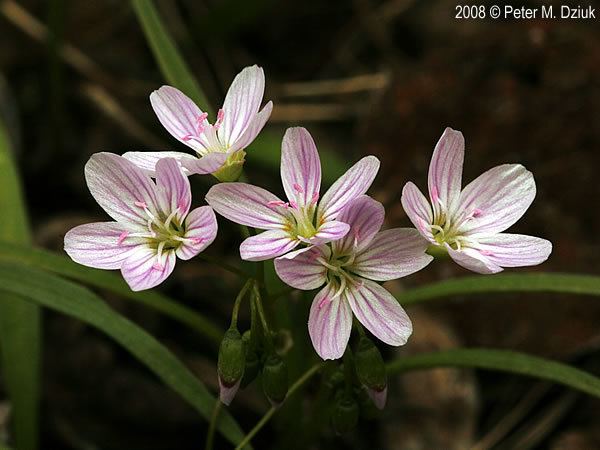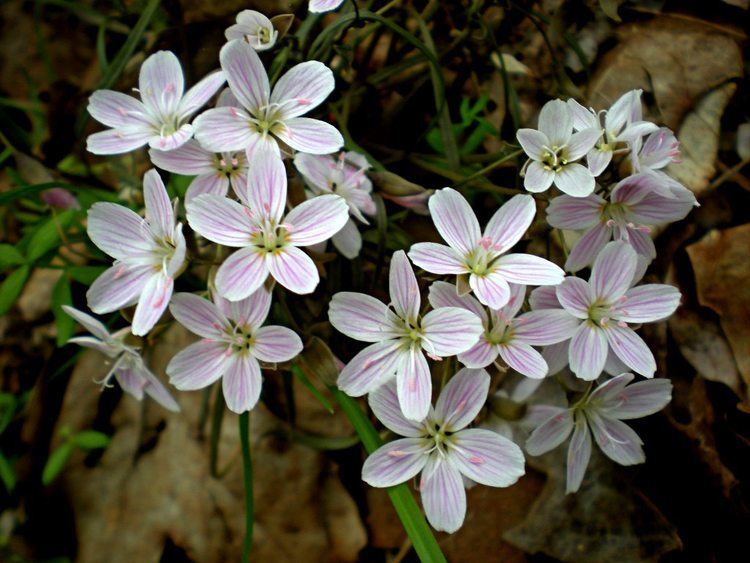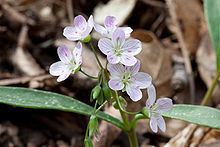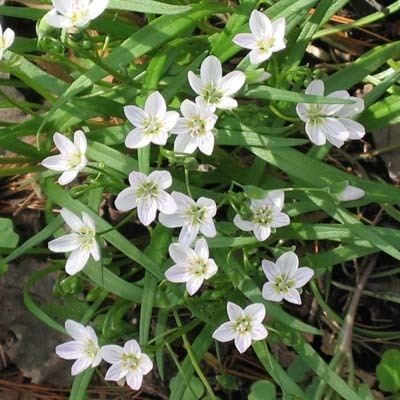Family Portulacaceae | Genus Claytonia Rank Species | |
 | ||
Similar Claytonia, Claytonia caroliniana, Dicentra cucullaria, Cardamine concatenata, Erythronium americanum | ||
Spring beauties claytonia virginica
Claytonia virginica, the Virginia springbeauty, eastern spring beauty, or fairy spud, is an herbaceous perennial in the family Montiaceae. Its native range is Eastern North America. Its scientific name honors Colonial Virginia botanist John Clayton (1694–1773).
Contents
- Spring beauties claytonia virginica
- Spring beauty claytonia virginica
- Description
- Habitat and range
- Hammonds yellow spring beauty
- Uses
- References

Spring beauty claytonia virginica
Description

Springbeauty is a perennial plant, overwintering through a corm. It is a trailing plant growing to 5–40 cm long. The leaves are slender lanceolate, 3–14 cm long and 0.5–1.3 cm broad, with a 6–20 cm long petiole.

The flowers are 0.7–1.4 cm diameter with five pale pink or white (rarely yellow) petals, and reflect UV light. It has a raceme inflorescence, in which its flowers branch off of the shoot. The individual flowers bloom for three days, although the five stamens on each flower are only active for a single day. Flowering occurs between March and May depending on part of its range and weather. The seeds are between 0.2-0.3 cm in diameter and a shiny black. The seeds are released from the capsule fruit when it breaks open. Elaiosomes are present on the seeds and allow for ant dispersal.
It is also a polyploid, having 2n between 12 and 191 chromosomes. The largest number of chromosomes was observed in New York City.
Habitat and range

Springbeauty is found in the Eastern temperate deciduous forest of North America It is noted for its abundance throughout many parts of its range, especially in forests. The plant can be found throughout many different habitat types including lawns, city parks, forests, roadsides, wetlands, bluffs, and ravines.
Hammond's yellow spring beauty
Hammond's yellow spring beauty, Claytonia virginica var. hammondiae, is a varietal with a very small range and population in a few areas of Northwestern New Jersey.
Uses
This plant has been used medicinally by the Iroquois, who would give a cold infusion or decoction of the powdered roots to children suffering from convulsions. They would also eat the raw roots, believing that they permanently prevented conception. They would also eat the roots as food, as would the Algonquin people, who cooked them like potatoes. Spring beauty corms along with the entire above ground portion of the plant are safe for human consumption.
